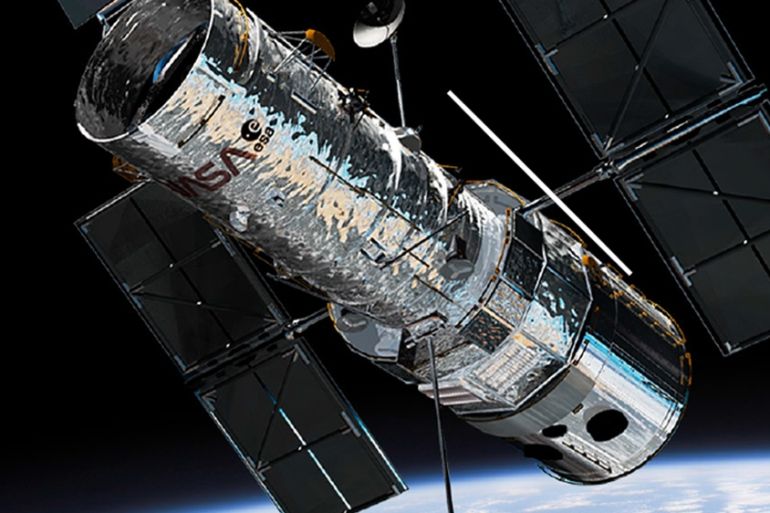Hubble Space Telescope celebrated 25 years on
During 25 years of service, Hubble has captured remarkable images of space, allowing scientists to look back in time.

From helping to determine the age of the universe to proving the existence of black holes, the $2.5bn Hubble Space Telescope has been a hugely powerful tool of scientific discovery.
Friday marks 25 years since the telescope was first launched.
It was not the first space telescope, but when it was launched into low Earth orbit in 1990, it carried onboard an unprecedented array of instruments: a 2.4-metre mirror and four main sensors designed to capture ultraviolet, visible, and near infrared light.
Keep reading
list of 4 itemsBoeing’s jets turn 70: A timeline of highs, lows and turbulence
US university ties to weapons contractors under scrutiny amid war in Gaza
Scientists discover sperm whale ‘phonetic alphabet’
Putting the telescope above the distortion of Earth’s atmosphere gave it the ability to take very high-resolution images without the interference of background light.
“I like to describe the atmosphere being something like looking through an old stained glass window,” said Dr Nancy Grace Roman, the first chief astronomer at NASA.
“The glass has defects in it and that sort of keeps you from getting a sharp picture, and the atmosphere also has defects.”
Looking back in time
During its 25 years in service, Hubble has captured some remarkable images of space, including galaxies so far away that the view we get of them comes from a period when the universe had just been created, thus allowing scientist to effectively look back in time.
“The achievements are spectacularly displayed in superb images,” says Francisco Diego, a senior research fellow at the Department of Physics and Astronomy at University College London.
“With unprecedented detail these have decorated the front pages of newspapers and magazines worldwide. But beyond images, it’s spectrometers have analysed the light of faint objects inaccessible from the ground.”
Among these objects, Hubble has discovered planets orbiting distant stars.
The high-precision telescope has given astronomers the ability to see changing weather on these planets and even detect elements like sodium in their atmosphere.
Data from the telescope has also allowed scientists to better measure distances between objects in space.
![The telescope captured this image of a giant cluster of about 3,000 stars, which resides 20,000 light-years away from Earth [NASA via EPA]](/wp-content/uploads/2015/04/c049f00b54f24543a0d6c89b6a7b4aa0_18.jpeg)
“Hubble’s greatness was not so much perhaps in discovering entirely new things,” said Mario Livio, as astrophysicist at the Space Telescope Science Institute.
Few spacecraft last as long or are as productive as Hubble.
Its continued operation and many of its significant scientific findings have only been possible because of five repair and upgrade missions. The first, in 1993, was needed to correct a problem with the telescope’s main mirror.
Subsequent spacewalks replaced detectors, gyroscopes and other electronics. It is hoped the telescope will continue to function until 2020. Its successor, the James Webb Space Telescope, equipped with a still more powerful array of detectors, is due to launch in 2018.
“The legacy of the Hubble Space Telescope is the inspiration and cultural enrichment that it has brought to our societies,” said Diego.
“That hopefully will take humanity on a path of peaceful exploration, essential to its own survival in the long term.”